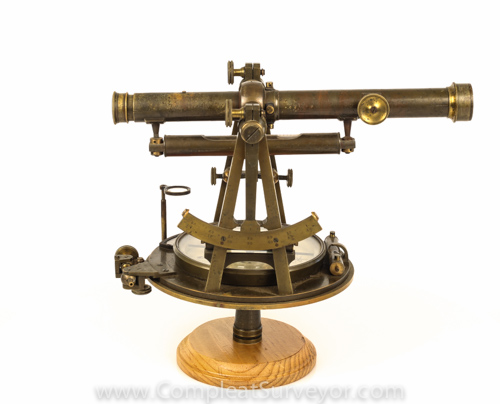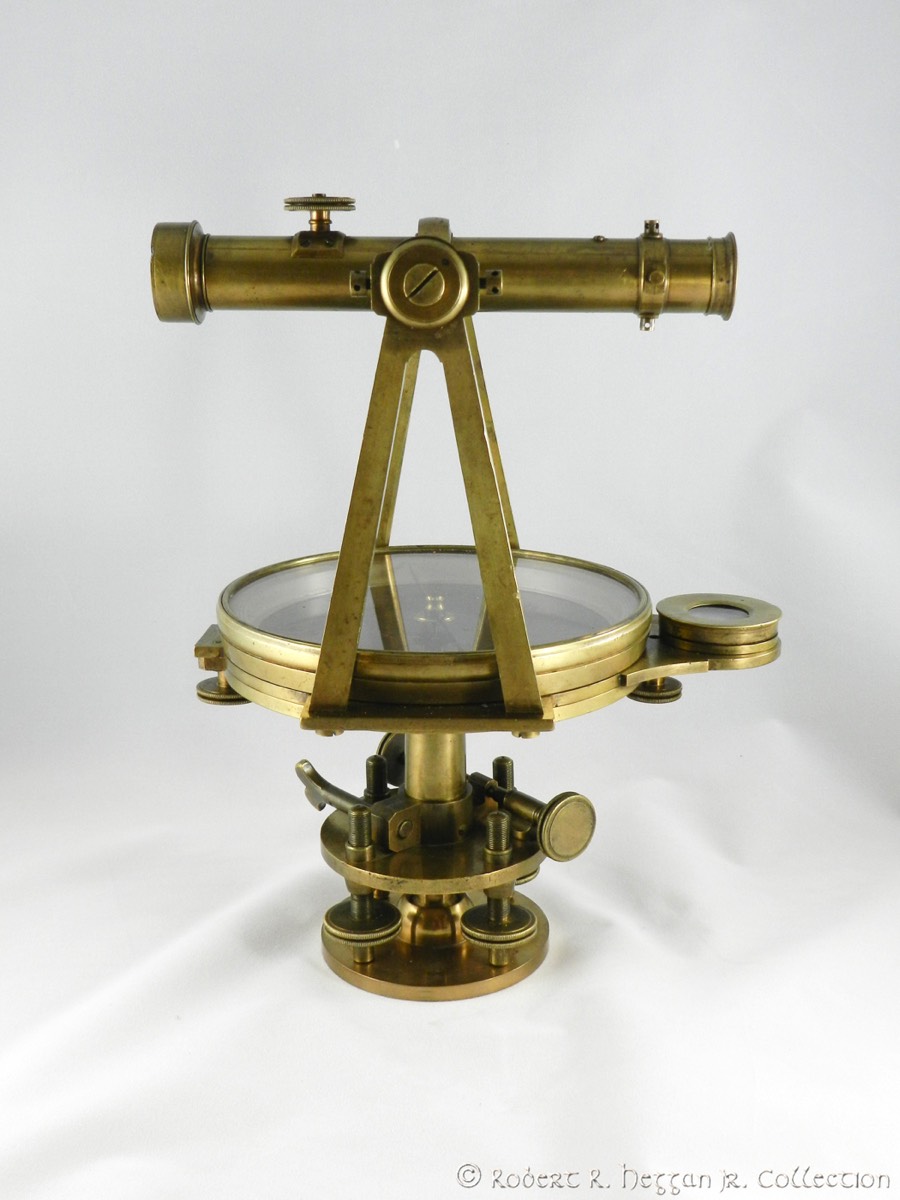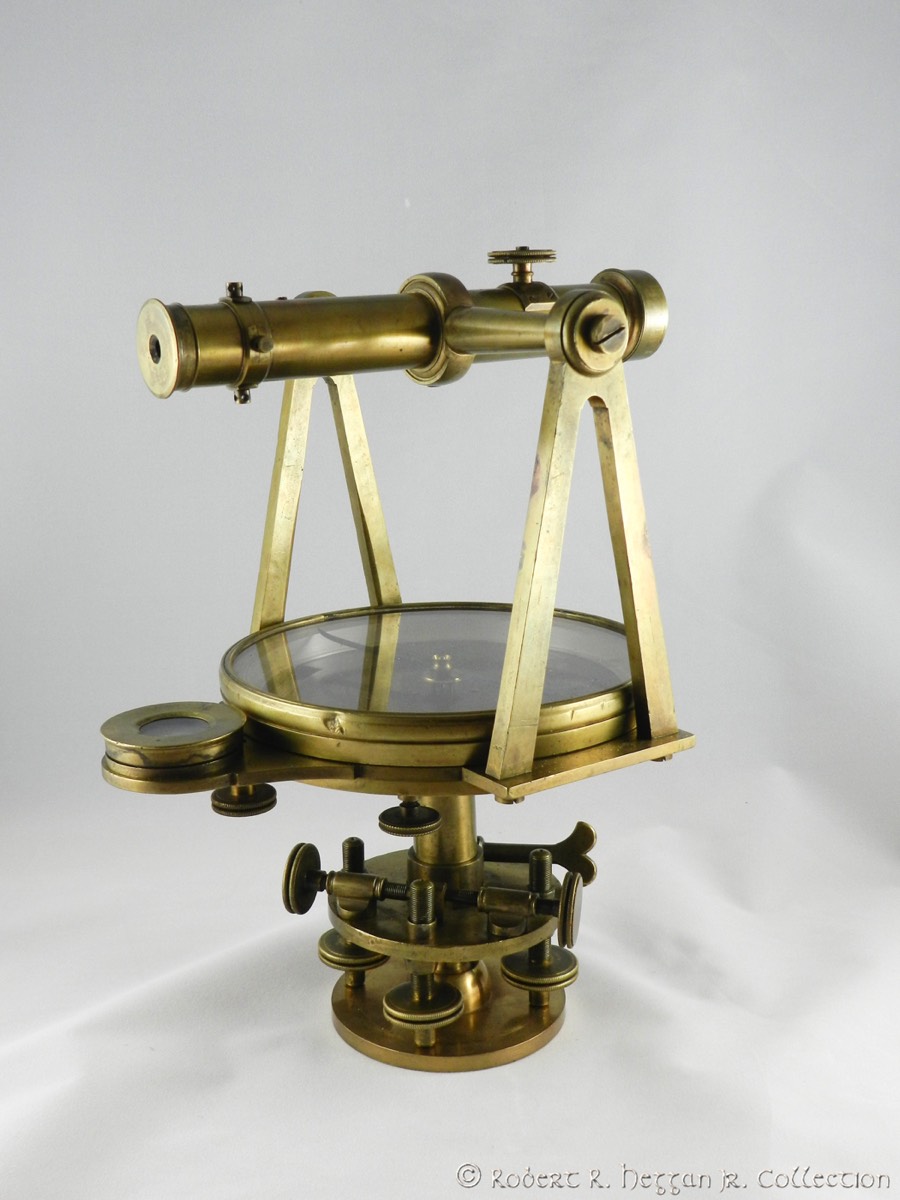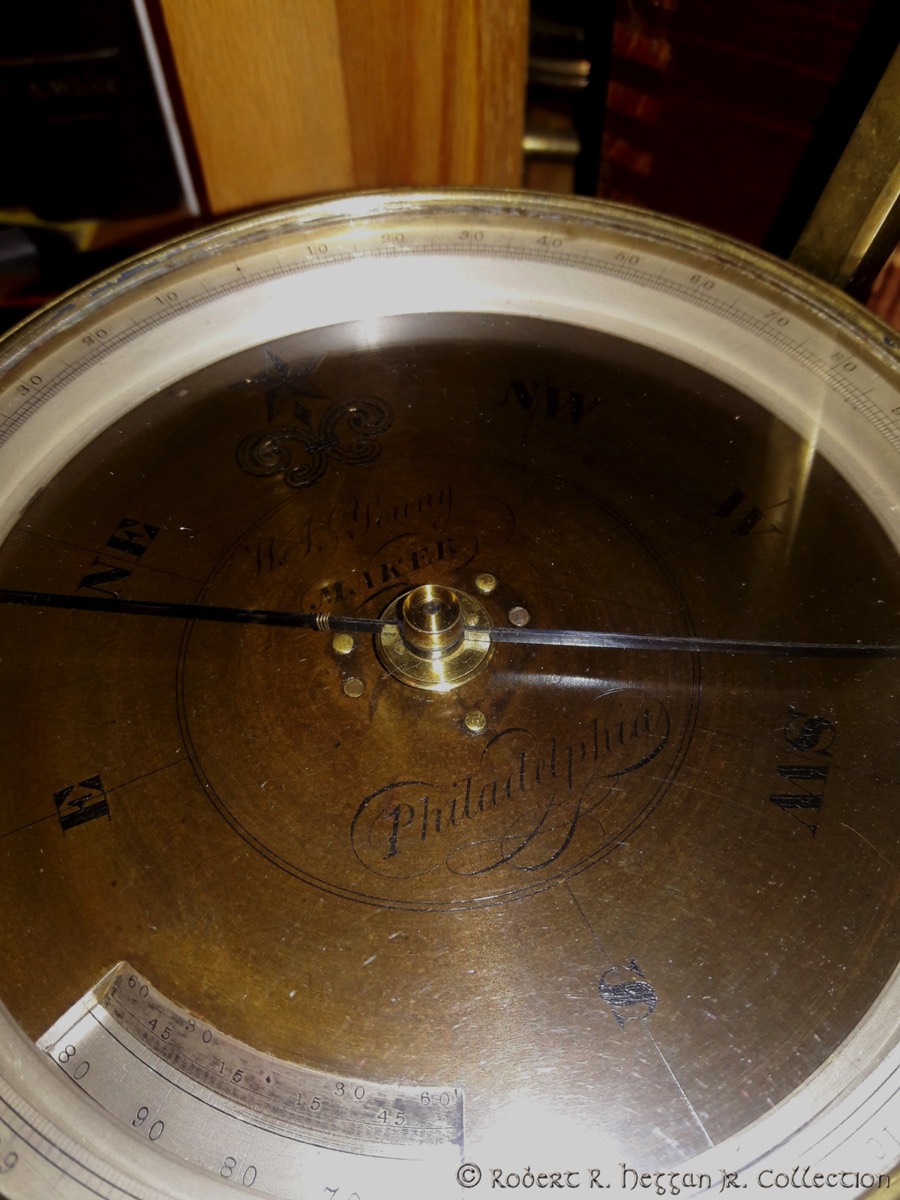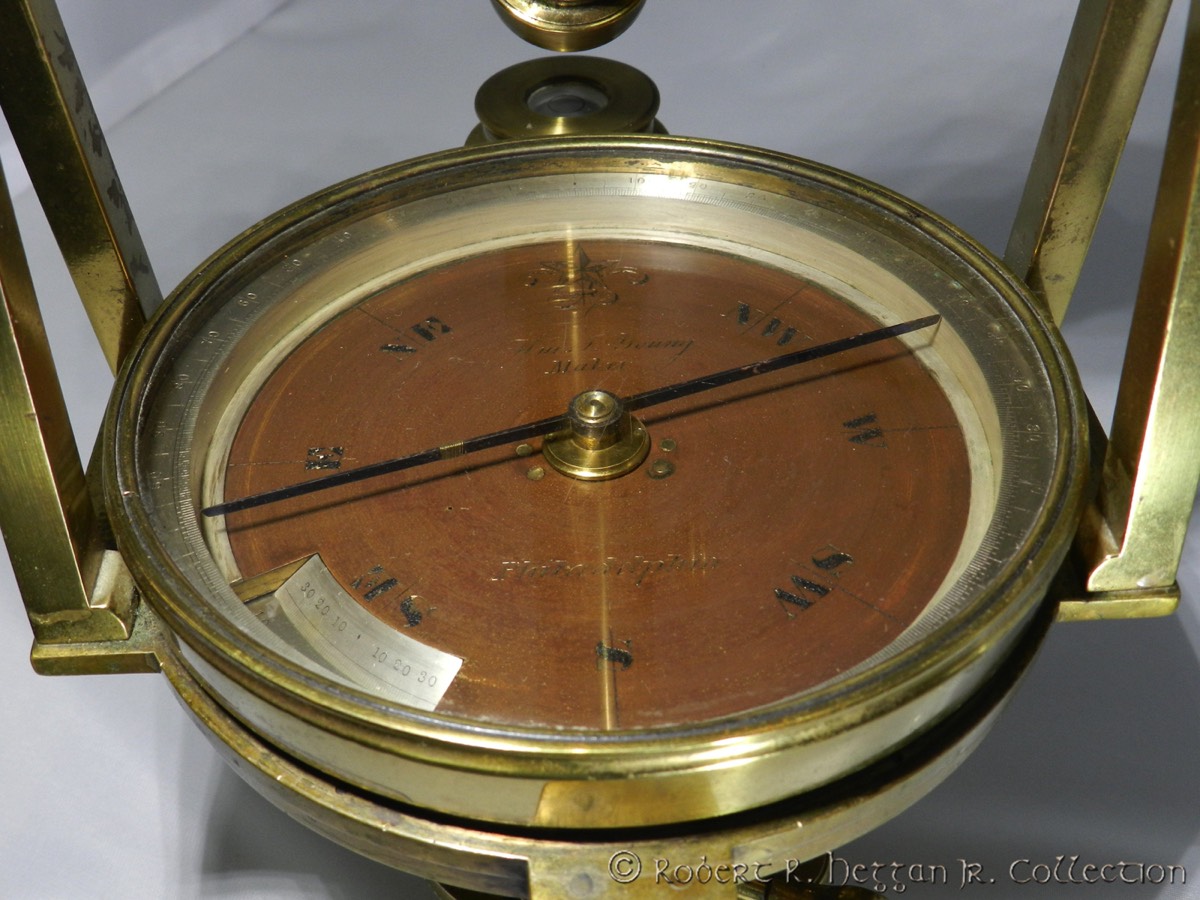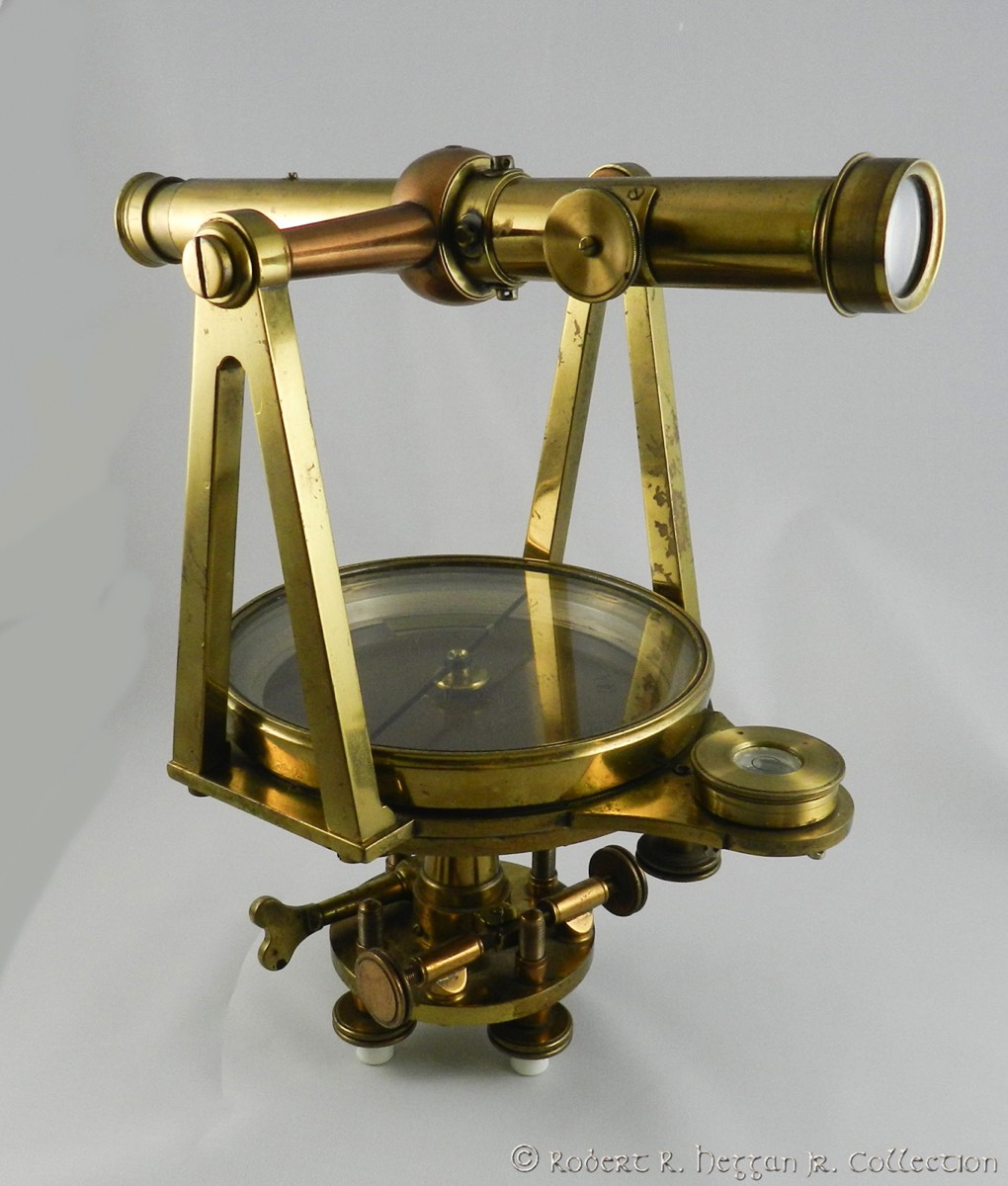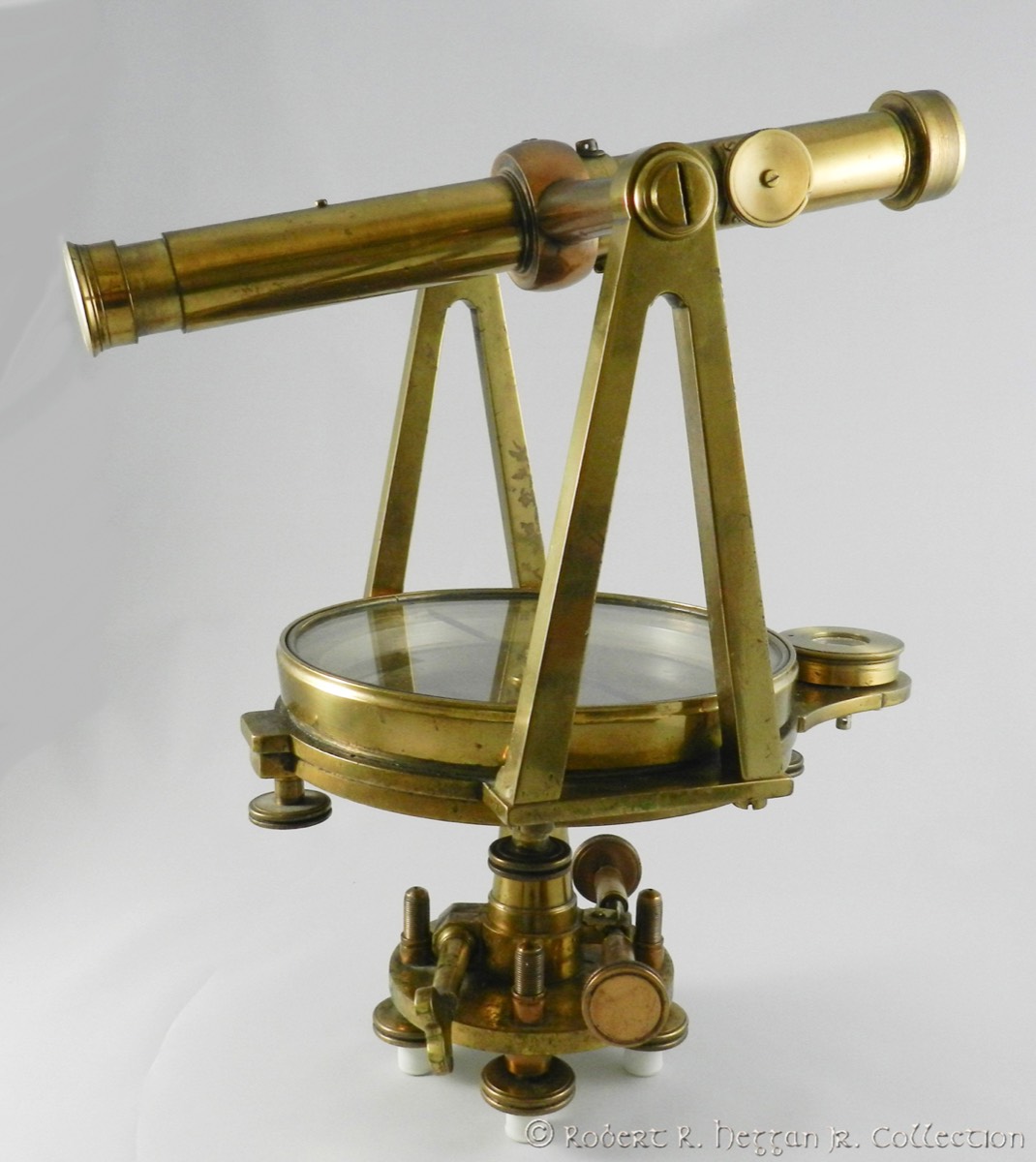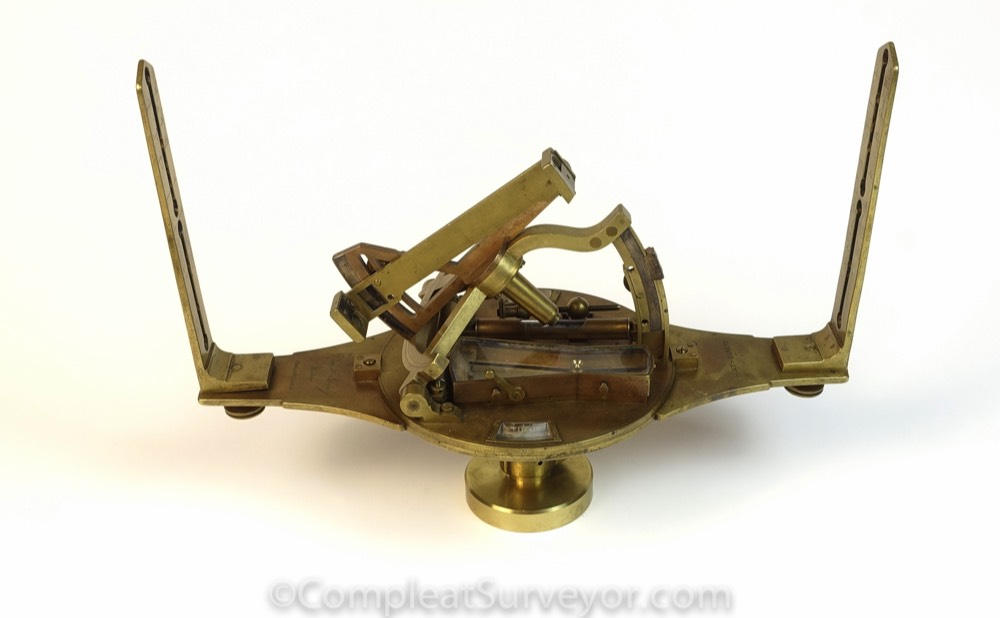
William Young - Young & Company - Young & Sons
History
William J. Young
1800-1870
(information obtained from articles written by Robert C. Miller)
William J. Young was born in Scotland in 1800 and raised in Philadelphia, PA. In 1813, at age 13, with the consent of his father, he was indentured as an apprentice to Thomas Whitney to learn "The Trade or Mystery of a Mathematical Instrument Maker." Seven years later, having earned his freedom and with $30 in his pocket, Young went into business on his own about 1820. William J. Young was first listed in the Philadelphia, Pennsylvania directory in the year 1825 as a mathematical instrument maker. Young's success came in large part from his innovations. He re-designed several European instruments adapting them for American field conditions, and worked closely with other inventors, helping them turn good ideas into workable instruments. In the mid-1820's Young directed his attention to the Y-level, producing a new instrument that was lighter in weight, cleaner and more practical than available English models. This level soon became a key item in Young's product line and, in his own words, "in its principal proportions the copy for nearly every successive manufacturer." Within a few years, his was the leading mathematical instrument shop in the United States. He introduced improved forms of the railroad compass, the solar compass, and the surveyor's transit. And he trained younger men to carry on the tradition.
In 1830 Young applied for a patent on an improved vernier compass. The patent was granted in 1832, surrendered, and reissued in 1834. Although termed a compass, this instrument held a lower graduated plate which could be damped so is to remain stationary, and an upper movable member carrying vernier and sights-and so could measure horizontal angles without reference to a magnetic needle. This compass was not a great success per se, but it led directly to the development of the surveyor's transit, Young's most important instrument. The transit made its first appearance in 1831, termed Simply "an Improved Compass, with Telescope attached, by which angles can be taken with or without the use of the needle, with perfect accuracy." The transit proved to be particularly useful in running railroad lines, and an early client was the B & O Railroad. In the design of instruments there is always a trade-off between ruggedness and accuracy. Young's original flat center model became the instrument of choice for general work as transportation improved and the need for accuracy increased.
Another of Young's successful innovative instruments was the solar compass. In 1835 he had met William Austin Burt, a Michigan surveyor. His frustrations with conducting magnetic surveys in areas having large deposits of iron ore led him to devise and eventually to patent an instrument for easily determining the true meridian and the variations of the compass needle. Over the next several years Young worked closely with Burt, constantly modifying the design until by 1840 they had achieved a truly successful solar compass. In 1858 Young patented a shifting head connecting the instrument and tripod.
Young's earliest signature read "W. J, Young Maker Philadelphia (or Philada)". Around 1840 Young changed his signature to "Wm. J. Young Maker Philadelphia lor Philada". A transit with the earlier signature has “1837" and "J. Folwell" marked on the underside of the level and on the interior parts of the needle lifter.: A compass with the latter signature is marked "Chas. J. Shain April 12 1842" and "Tom Tennant March 31 1842" on the underside of the socket and level respectively. Shain and Tennant were Young's apprentices. Since Folwell is listed in directories as shoe findings and, after 1840 as turner, it is likely that he had a lathe and that he made small parts on contract. There is no evidence that Folwell ever worked in Young's shop. It should be further noted that all Young compasses and transits made between 1831 and 1846 have the additional marking "Patent". Young began marking serial numbers on his instruments around 1853. These numbers began around 3000, and probably indicate the number of Young instruments to date. Analysis of these serial numbers shows that Young produced some 65 instruments per year in the 1850s, with annual production rising to 120 in the early 1900s.
Charles S. Heller (1839–1912) was born in Germany, and moved with his family to the United States in the late 1840s. He went to work for William J. Young in 1855, and along with Thomas N. Watson became a partner in William J. Young & Co. in 1865; the partnership disbanded in 1870. Alfred Young operated the firm as Wm. J. Young & Sons, and Heller went on to form Heller & Brightly. The firm began signing their instruments Young & Sons in 1875, and began using this name in advertisements around 1882. Young & Sons was incorporated in 1917. Keuffel & Esser obtained control of the firm in 1918, made it the Y&S department of K&E, and moved the operations to the K&E factory in Hoboken, New Jersey.
Young died in Philadelphia in 1870. Following Young’s death his business was continued under the direction of his son Alfred, trading as William J. Young and Sons in 1881, when Alfred was succeeded by his son, Alfred, Jr. In 1921 the company was dissolved, its assets assumed by Keuffel & Esser.
Young was the first American to own a dividing engine--a device for mechanically dividing circles into degrees and minutes. He would not have needed such a complex and costly device just to make compasses, but he would need it to graduate the circles of more precise instruments. Not having the money to purchase a dividing engine from England, Young built his own. He had never seen a dividing engine, but worked from a printed description of an English engine. He would later modify this original engine, and build two others. The dividing engine enabled Young to divide circles more rapidly and more precisely than could be done by hand, thus enhancing his productivity and the accuracy of his instruments. By 1870 he had three circular dividing engines, two linear ones, and 16 lathes, all powered by hand. on the scene at a time when the expansion of the United States across the continent, and the building of canals and then railroads, ensured a steadily rising demand for instruments-both simple surveying instruments such as compass and chain, and engineering instruments such as levels, transits and solar compasses. Unlike colonial instrument makers who had barely enough business to keep themselves and a shop boy busy, Young had more business than he could handle. By mid-century his work force Young's timing was excellent. He appeared numbered about ten hands, and he was claiming "If I could find competent workmen, I could at present double my business."
While 18th-century American instrument makers tended to work alone, or with an apprentice or two, Young usually had ten or so men in his shop, some apprentices and some journeymen. These men were all highly skilled and commanded relatively high wages. The instruments they produced were substantially more costly than those produced in factories, such as that of W. & L. E. Gurley.
Young's influence on the instrument business extended beyond his direct descendants to several other important makers. Knox & Shain, who established a business in 1850, had worked for Young, Charles J. Shain as an apprentice, and Joseph Knox as Young's shop foreman. Another Young apprentice was Thomas Tennant, who became the proprietor of the leading instrument shop and warehouse in San Francisco. Charles Heller, one of the founders of the firm of Heller & Brightly in Philadelphia worked for Young for ten years before becoming a partner for another five, then leaving to establish his own firm.
None of Young’s account books survive, precise production levels are not known. Young first began to number his instruments in about 1853, beginning with Number 3000, which suggested an output of approximately 100 instruments per year. In 1855, an unusually busy year, he produced more than 150 instruments. Young began marking serial numbers on his instruments in the early 1850s, probably in 1853, the year he moved his shop from Dock Street to 33 North Seventh Street. The lowest serial number yet found on a Young instrument is 3155. I believe this is a true number, indicating the number of instruments Young had made to date. Corroboration comes from William J. Young's grandson, Alfred C. Young, who stated that "3000 instruments were manufactured by us before any descriptive record was kept”.
Young joined with Charles S. Heller and Thomas N. Watson in January 1866 and began trading as William J. Young & Co., the partnership disbanded on June 27, 1870. Heller, who went on to form Heller & Brightly, later noted that serial numbers 4100-4400 were used during this period.
After Young's death in 1870 his son Alfred operated the business for a few years as Wm. J, Young & Sons and then, probably in 1875, he changed the name to Young & Sons. After Alfred's death in 1882 his son Allred C. Young managed the business under the same name until it was incorporated in 1917. On his death in 1918 Keuffel & Esser obtained control of the business, and continued operations in Philadelphia. In 1921 the business was reorganized, becoming the Y &S department of K&E. Sometime before 1927 (probably 1922) all Y &S operations were moved to the K&E factory in Hoboken, New Jersey. These Y&S Dept instruments were advertised in all K&E catalogues from 1921 to 1944.
Catalogues
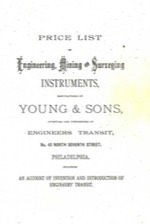
William Young - Famous Philly based maker of instruments - made the first solar compasses for William A. Burt:
1800s Young Hendle Collection
1881 Young & Sons
1883 Young & Sons
1885 Young & Sons
1911 Young & Sons
Young Pocket Compasses
Dating Young Instruments
Dating Information Developed By Robert C. Miller
Labels
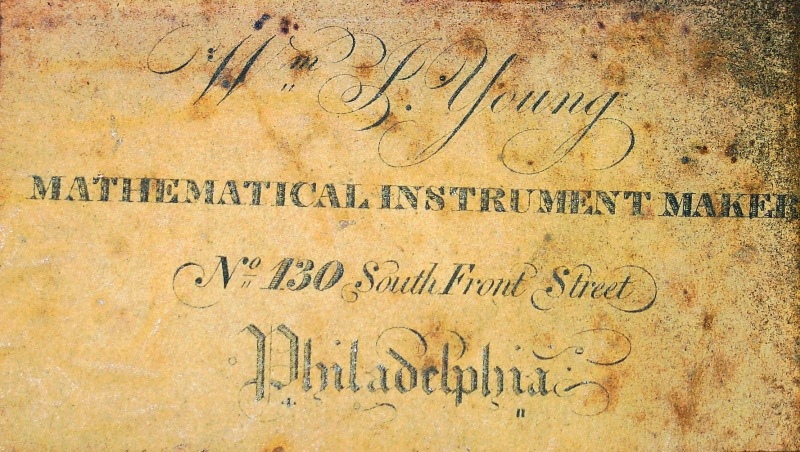
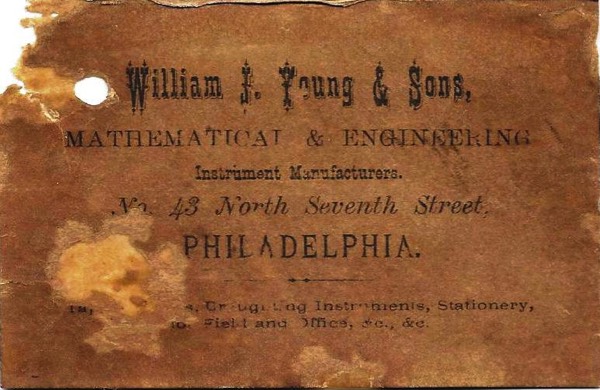
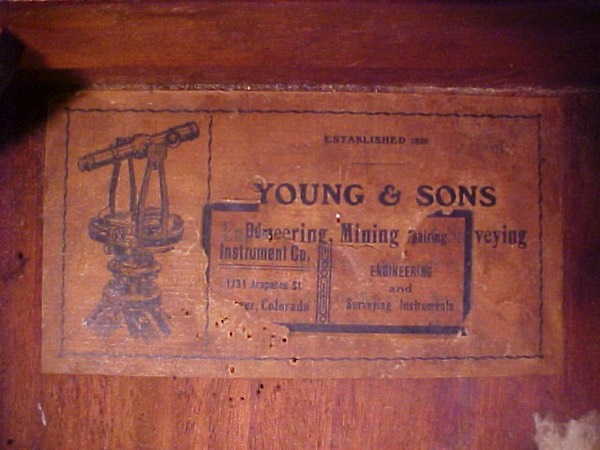
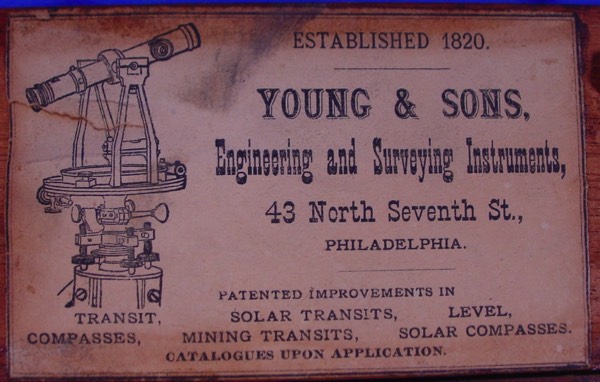
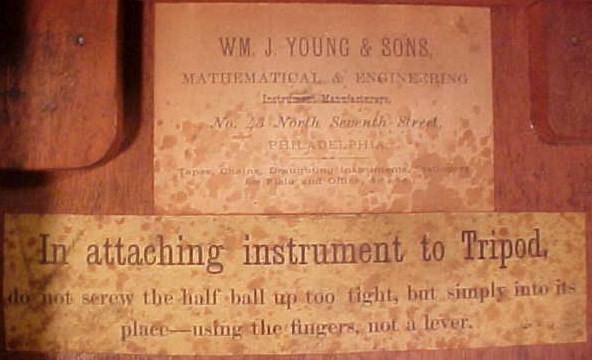
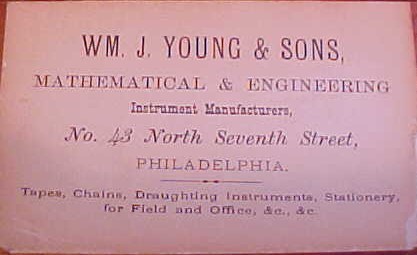
Compleat Surveyor Instruments
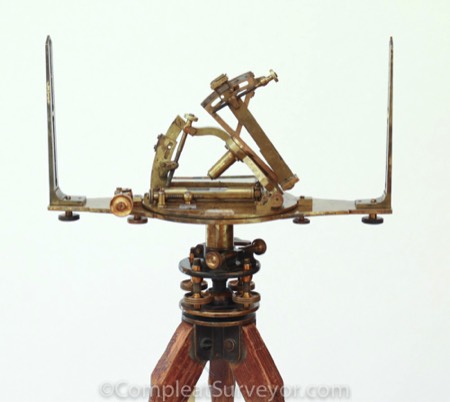
The First Solar Compass 1840
360 Degree Spinner View
The FIRST Improved Burt Solar Compass Made
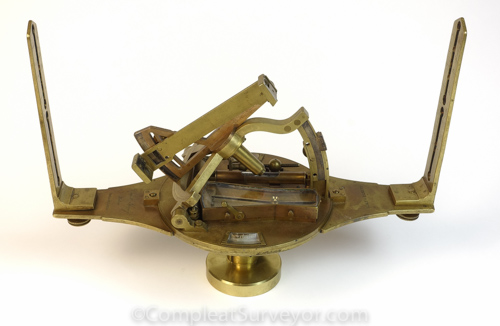
Burt's Original Design c.1848
Pre-1852 in Burt's ORINGIAL design
SOLD
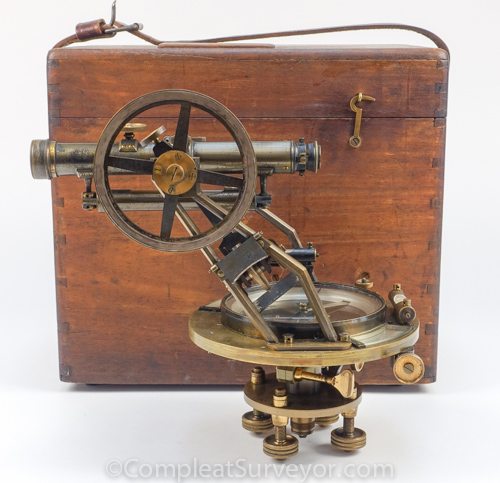
1880 Young & Sons inclined Standards (McNair-Style) Mining Transit
360 Degree Spinner View - Downward Scope
RARE and COOL!!! Known History
SOLD
Email Russ
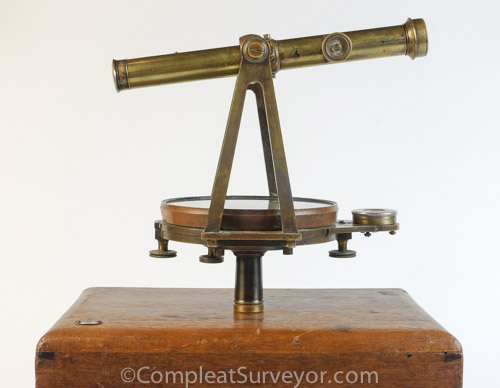
1853 Young Transit SN 3302
Sweet Little Transit - SOLD
Email Russ
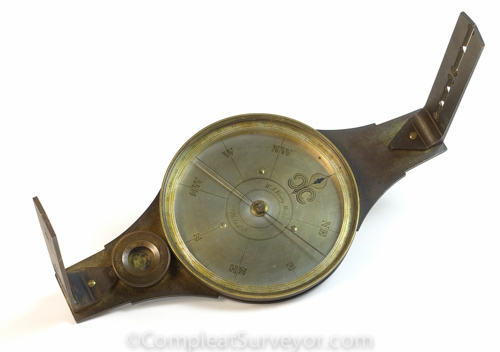
Circa 1825 Young Compass - Young's First for His Own Shop
This is Reportedly the Very First Compass William Young Made After Opening His Business - SOLD
Email Russ
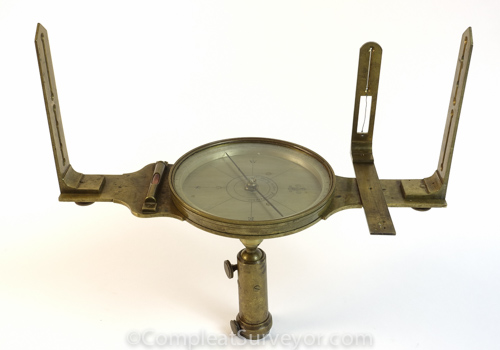
Circa 1823 Young Compass - Oldest Young Instrument
Really Neat Compass - Great for Display - SOLD
Email Russ
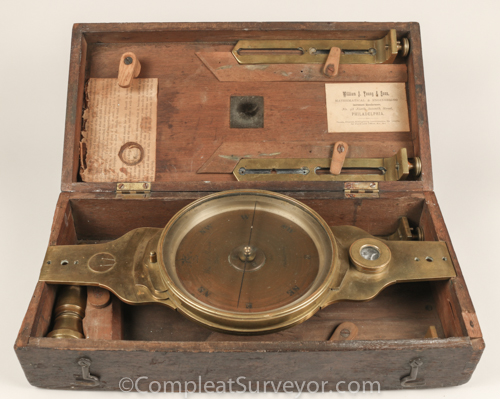
Circa 1855 Young & Sons Vernier Compass
Extra Set of Vanes & One Vane has a Rare Slider
SOLD - Email Russ
© 2020 Russ Uzes/Contact Me
